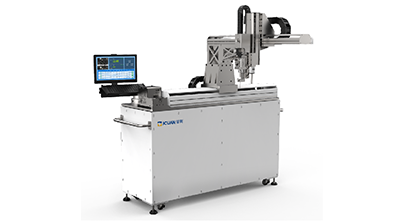Inline screw machines play a key role in the tightening and assembly process of intelligent production lines.Their automated loading and unloading capabilities are directly related to cycle efficiency and production capacity stability.Linking with upstream and downstream equipment to achieve manual material transfer is a key component in improving the automation level of the entire line.
Automatic loading and unloading systems typically consist of a conveyor module,a lifting mechanism,a cylinder structure,and a sensing system.Loading,often via a conveyor belt,pallet conveyor,or roller conveyor,delivers the product to the tightening and assembly station.After the positioning mechanism secures the workpiece,the inline screw machine automatically identifies and operates the product.

Unloading,depending on the equipment layout,supports various modes,including finished product ejection,robotic transfer,or flow to the next workstation.Through signal interconnection,the equipment can automatically output the product after the process is completed,eliminating cycle bottlenecks caused by manual handling.
Some systems also feature barcode scanners and positioning sensors to enable linked product information recognition and tightening path control,enhancing system compatibility and flexibility.For multi-station or high-cycle requirements,the automatic loading and unloading module uses servo motors for positioning,ensuring continuous operation.
To ensure system stability,automatic loading and unloading systems typically incorporate material sensing,fault alarms,and blockage buffering mechanisms to maintain a consistent operating rhythm during continuous operation.Overall,the introduction of automatic loading and unloading effectively reduces manual intervention,improving production consistency and automation levels.